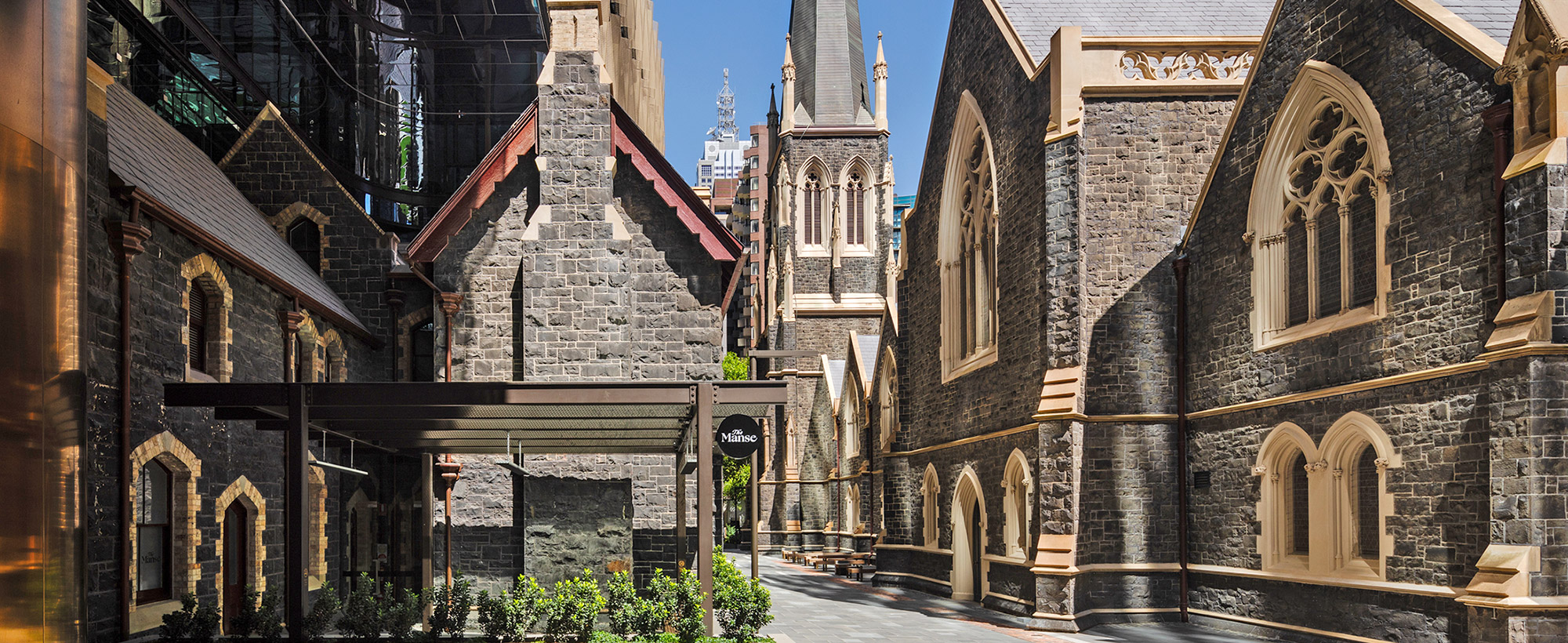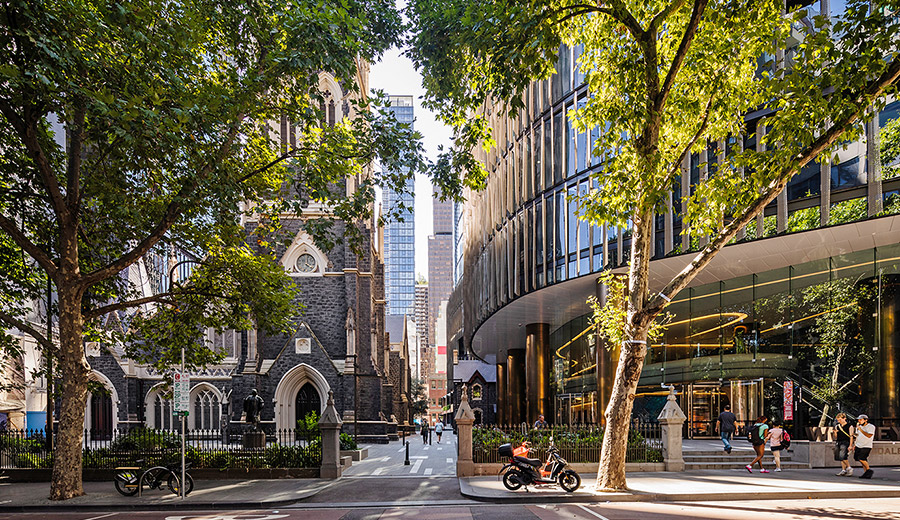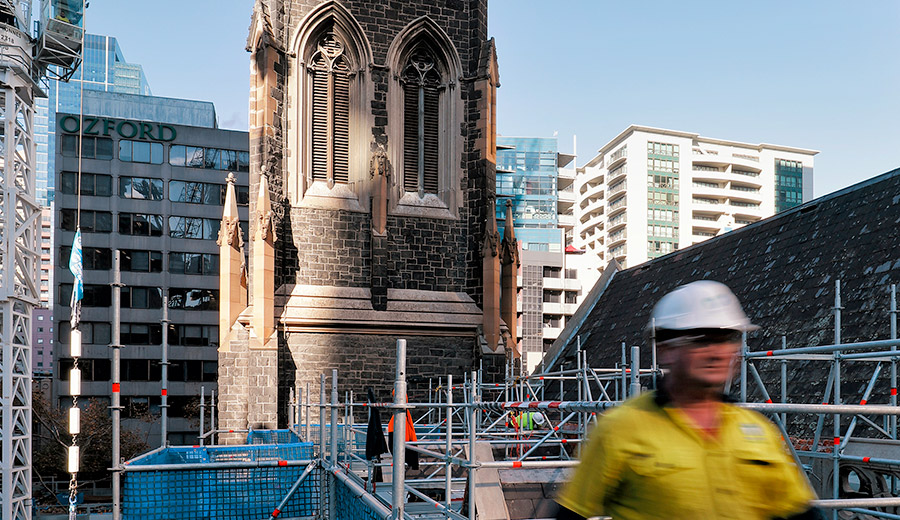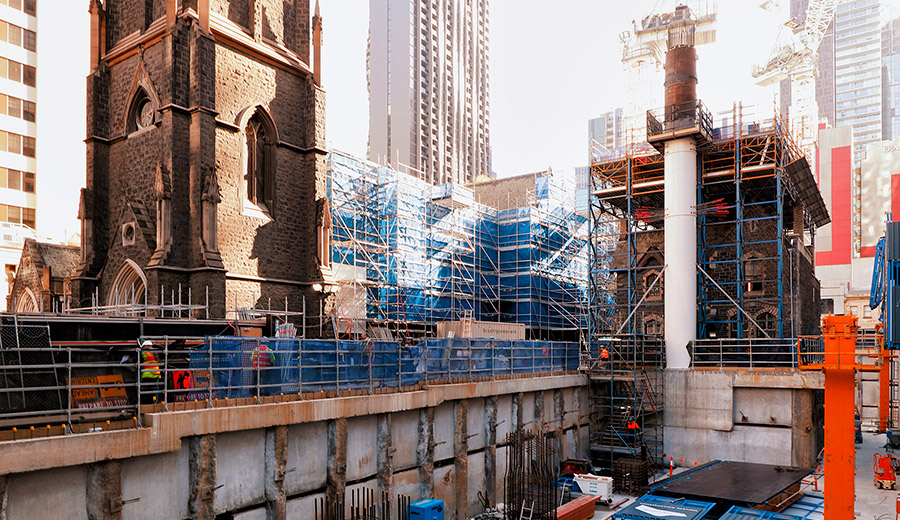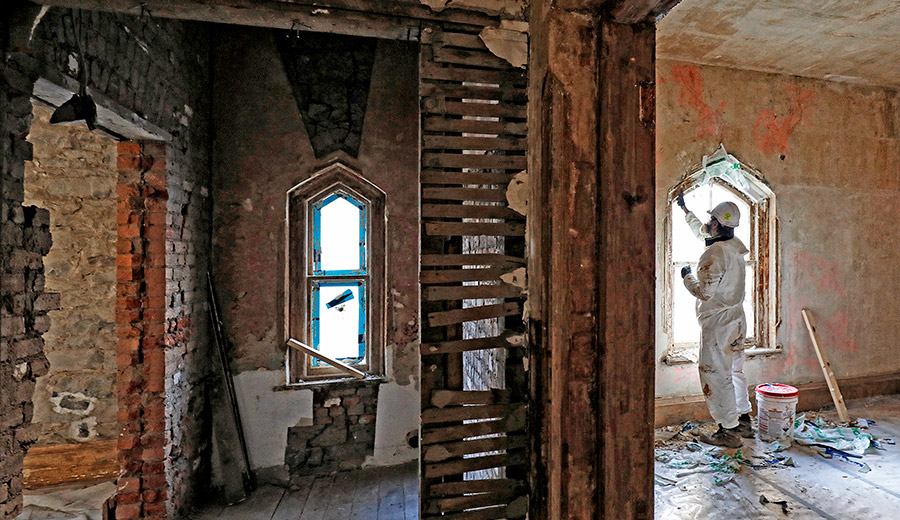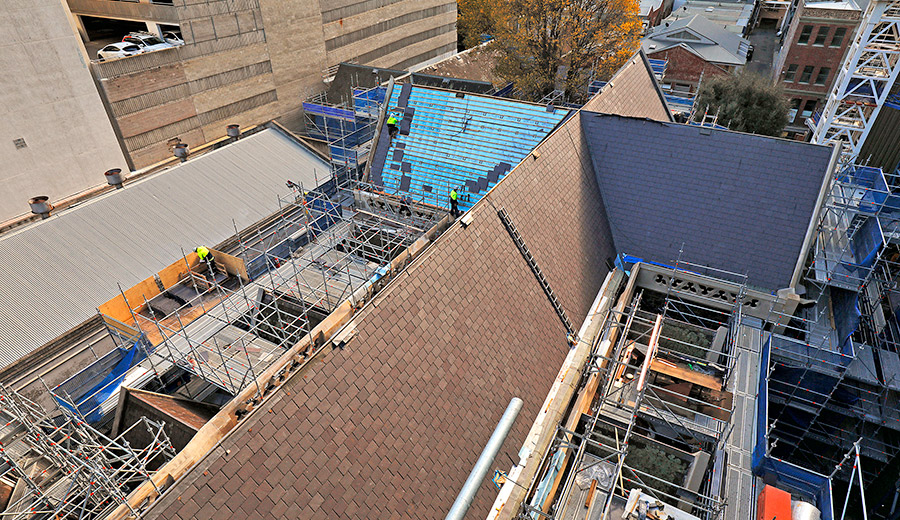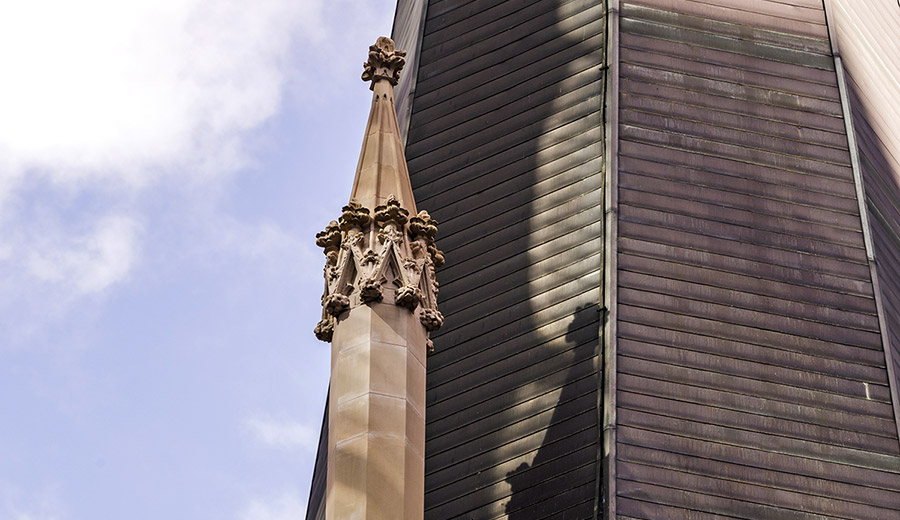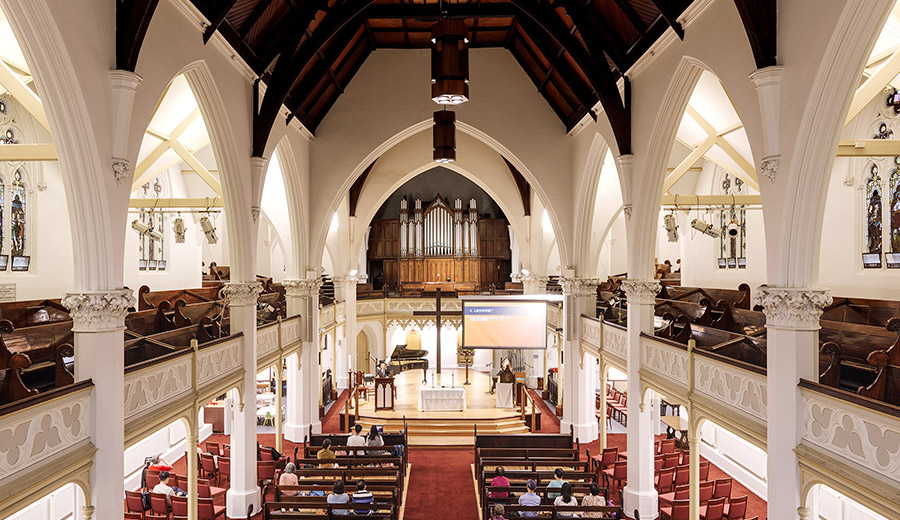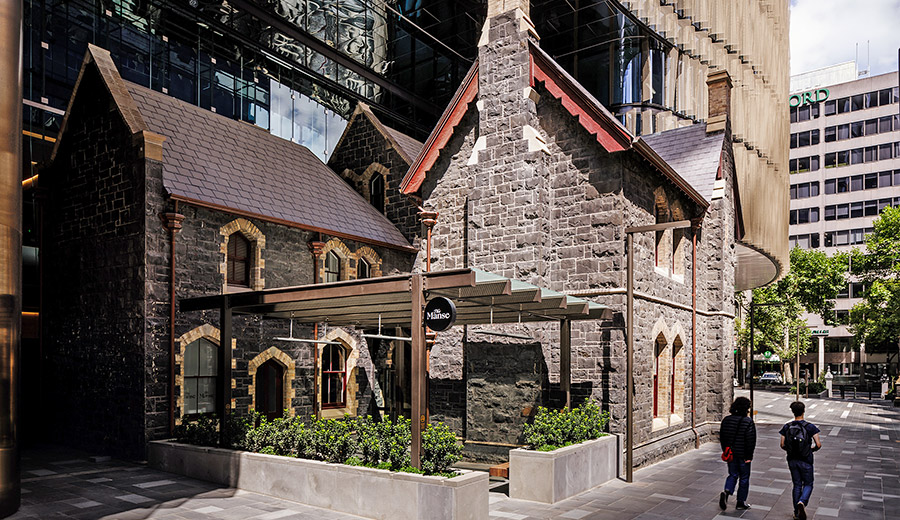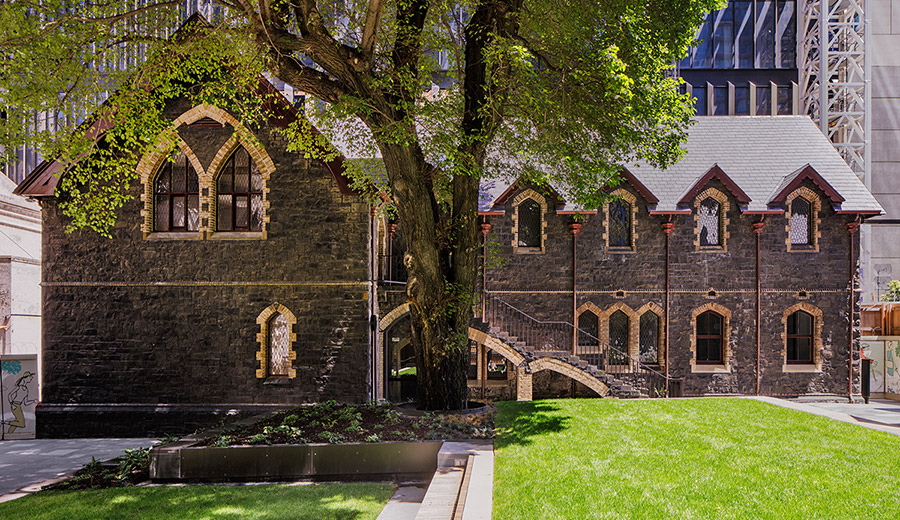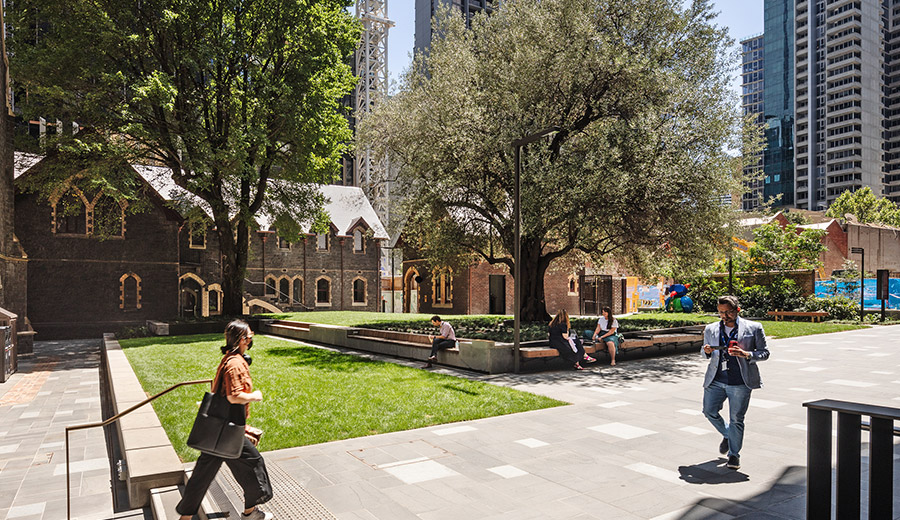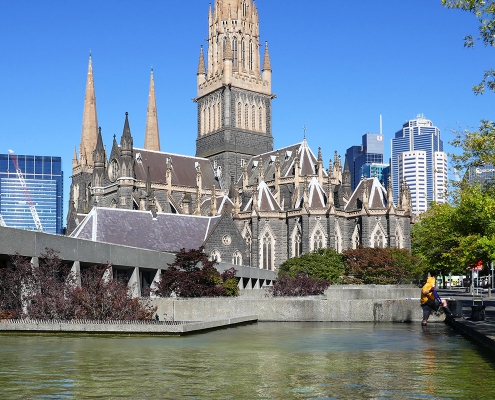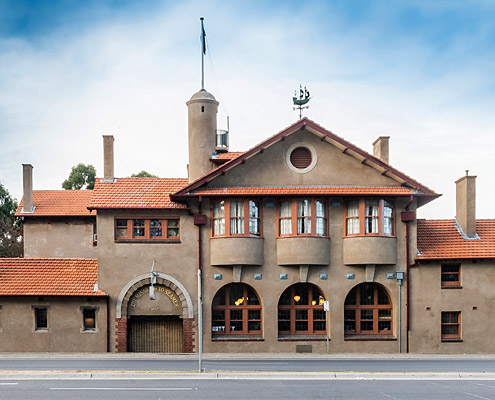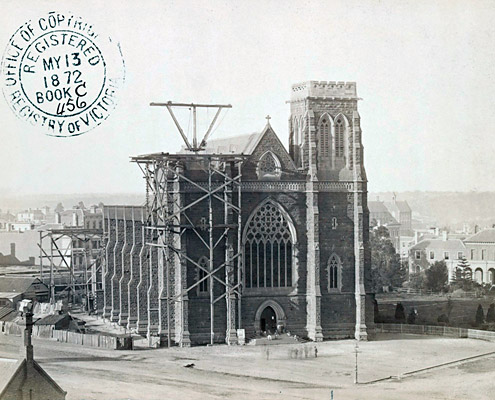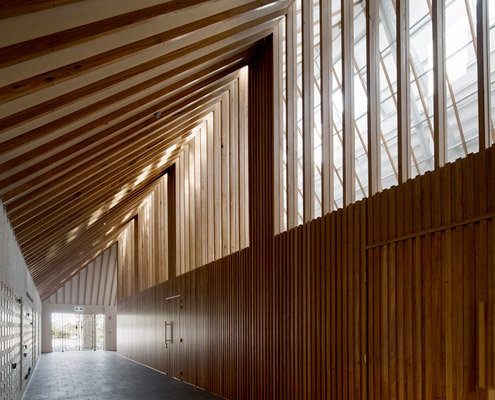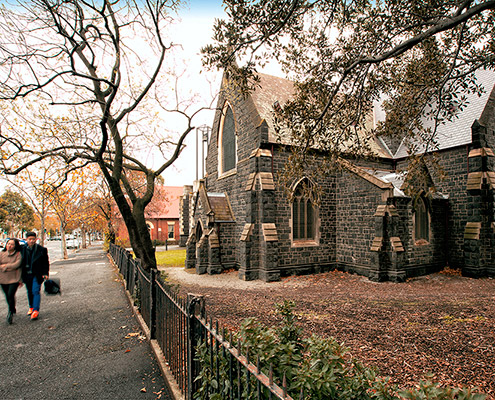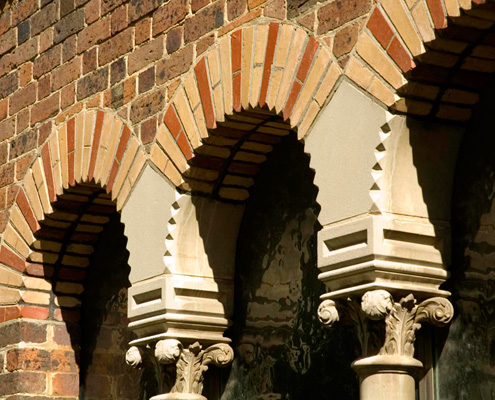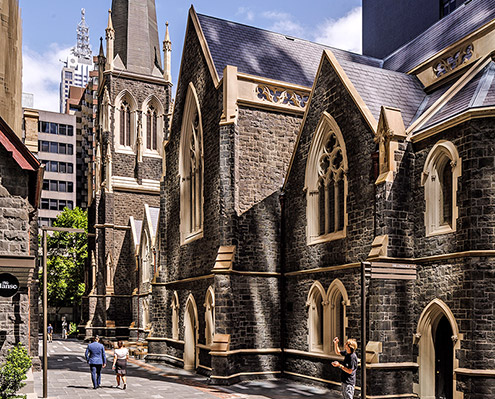
Client Uniting Church in Australia Property Trust
Wesley Place is located on the lands of the Wurundjeri people of the Kulin nations
The Wesley Church complex in central Melbourne is a substantial and complete collection of related mid-to-late nineteenth and early twentieth century ecclesiastical buildings. The principal group of 1858-59 buildings — the Church, Manse and Schoolhouse, all designed by architect Joseph Reed (1823-1890) in the Gothic Revival style — are architecturally significant as the earliest intact church complex in the state of Victoria. Also surviving are the later Caretaker’s Cottage (1914) and remnants of the nineteenth century fence (gateposts and plinth, 1873) facing Lonsdale Street.
The vision for the project was to conserve the key buildings in the complex and secure its future through a site-wide regeneration process. The grounds had been taken over by carparking, the site had lost its sense of cohesion and the buildings were in poor condition. Removal of the Princess Mary Club (1926) and former ANA Jones factory (1938) enabled construction of a new office tower designed by COX Architects for the east side of the lot, spanning the Manse and activating the whole site, laneway and frontages. New landscaping has created an enticing green space, and uses natural desire lines through the site to re-engage the city centre with Wesley Place’s significant group of buildings.
The Church has undergone major conservation works — extensive bluestone and sandstone repairs, localised repointing, and replacement of slate, flashings and copper gutters. The decorative carved stonework on the pinnacles has been conserved or replaced. The stained-glass windows have been cleaned, leadwork repaired and protective mesh installed. Extensive repairs to the pressed cement parapet balustrade and capping included structural strengthening. Inside the church, works included crack and plaster repair, and re-painting.
Conservation works to the Schoolhouse, Caretaker’s Cottage and Manse focused on the original stonework, brickwork, render, timber, glazing and slate roofing. Unsympathetic later additions/alterations have been removed. Forensic investigation of the fabric and photographic material informed the reinstatement of the cast iron rainwater heads and diamond pattern leadlight windows to the Schoolhouse. Hard plaster ceilings were consolidated and sash windows repaired, along with strengthening of the timber flooring.
As the project involved adaptive reuse, it triggered essential DDA and statutory code compliance requirements. New services have been carefully integrated, a new lift installed in the Schoolhouse and structural pinning carried out to two wall leaves of the Manse for seismic strengthening.
We also designed a site-wide interpretation scheme for the heritage aspects of the complex. Significant elms and an olive tree have been retained and integrated into the new landscaping, ensuring their ongoing viability as part of the public realm. Sections of the original masonry boundary wall (Little Lonsdale Street) were dismantled and reconstructed using the original materials. The bluestone fence plinth and the gate posts have been conserved, and cast iron pickets replicated from castings of remnant elements.
Victorian Architecture Award 2022 : John George Knight Award for Heritage
Victorian Architecture Award 2022 : Commercial Architecture commendation (to COX Architects)
Australian Good Design Award 2023 : Architectural Place Design
Victorian Premier’s Design Award 2023 : Architectural Design, finalist
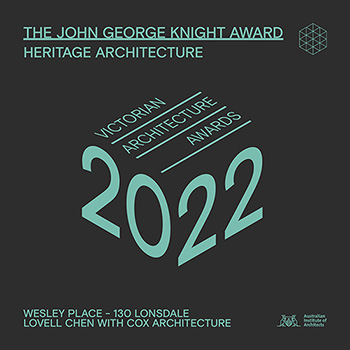 Jury citation
Jury citation
The conservation and restoration of Wesley Place is a tour-de-force in the art of conservation as well as the activation of a heritage complex within the public realm.
The complex contains a substantial collection of heritage buildings dating from the mid-nineteenth to early-twentieth centuries with, at its core, an 1858-59 gothic revival rusticated basalt church with two-storey manse and schoolhouse, all designed by noted nineteenth-century architect, Joseph Reed.
The jury was impressed by the regenerative vision for the site, involving the subjective consideration of all fabric leading to the removal of agglomerative elements while protecting and conserving through selective intervention and retention. A dynamic spatial fluidity has been generated between and around the historic buildings, ancient trees and historic fencing. The restoration project is further entwined by the development of a multi-storey tower cantilevering over the manse in a fascinating act of architectonic co-operation, founded on the manse’s redoubtable primacy and permanence.
Wesley Place is the winner of the highest accolade in the heritage category, the John George Knight Award for Heritage, for its remarkable achievement in carefully conserving and preserving built heritage, for facilitating adaptive reuse and for revealing an exciting new public space to the City of Melbourne.
Heritage data
original architect (1858-59) Joseph Reed
original architect (Nicholas Hall) Harry Norris
constructed (Church, Manse, Schoolhouse) 1858-59
constructed (Caretaker’s Cottage) 1914
constructed (Nicholas Hall) 1938
victorian heritage register H 0012
Photos : Trevor Mein
Construction photos : Peter Glenane
SELECTED REPORTS HELD
full list : see REPORTS INDEX
Wesley Church and Central Mission Complex, 124-144 Lonsdale Street, Melbourne: Conservation Management Plan
Allom Lovell & Associates / AUGUST 2000 : CONSERVATION MANAGEMENT PLAN

